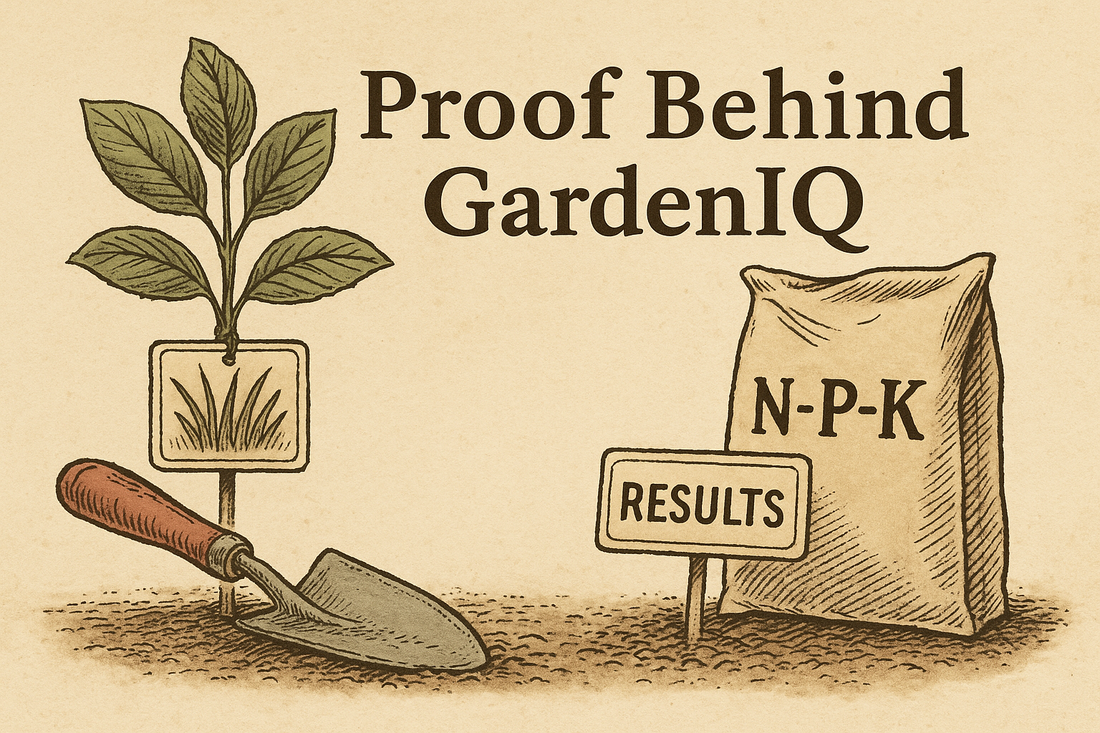
The GardenIQ Difference: Clear Labels, Field-Tested Results
Why we began with a blank slate
Our team spent years formulating for farms and golf courses. Those clients wanted quick color or yield, not marketing slogans. When we shifted to the home-garden space, we kept the same benchmark: measurable results in real soil, under real weather.
Four principles that shape every bottle
-
Field data first
Prototype blends run through full seasons of side-by-side trials. A new formula earns a label only if it beats the previous version by a clear margin in color, fruit weight, or root density. -
Transparent numbers
If it is in the jug, it is on the label. For example High Yield Nitrogen comes from fish hydrolysate or urea acetate. -
Low-salt load
We skip phosphorus in most liquids. Soil tests on vegetable beds and lawns rarely show a deficit, and excess phosphate can block iron. Lower salts mean fewer tip burns and healthier microbes. -
Carbon carrier technology
All liquids ride on our Nutrx™ system. Soluble carbon holds each mineral in a form roots and microbes recognize, so lower N-K numbers deliver the same punch as high-salt blends.
Myth to leave behind
Myth: A fertilizer with high numbers must work faster.
Reality: Uptake, not label concentration, drives growth. Chelated iron at 0.5 % can green turf faster than raw iron at 5 % because it stays soluble near neutral pH. GardenIQ focuses on availability, not marketing decimals.
Ready to try a cleaner strategy?
Start with one pairing that matches your goal:
- Vegetables: High Yield 2-0-4 plus Octane Boost 4-0-2
- Houseplants: RhizoCarbon 2-0-5 with Doonbeg 3-0-2
- Lawn: Dark Venom 3-0-5 + iron followed by All Purpose 7-0-2
Use the listed rates for one month, then judge by leaf color, root vigor, and the time you spent mowing instead of juggling bags. A clear label, a low-salt formula, and field-tested ratios do the rest
